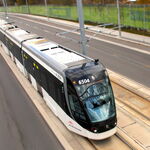ssiguy2
Senior Member
MrsNesbitt is right...........sometimes you need to destroy something to fix it.
The problem is that in terms of infrastructure in Canada we tend to just let things rot and fixing them usually means nothing more than a Royal Commission which is always due out after the next election. God knows the feds have ruined VIA by the recent cutbacks to service to SW Ontario yet still demanding the trains serve every little dump along the route making London to Toronto a painfully slow option.
Politics is always at work and there will be a lot of politics with this new line. Many will like the line but the screams from the smaller cities like Stratford or Oxford/Brant counties will be deafening. That matters because the vote Conservative federally and Harper controls the purse strings at VIA. With collapsing ridership on the current line east of London there will be major cutbacks. Also raises the point.........will this be part of VIA or will it be double fared for those coming from Windsor/Sarnia? Will it get a VIA subsidy? If the current line is effectively shut down {especially if GO is extended to Brantford which is inevitable} then how does one get from Oak/Bur/Nia/Ham/Brant/Wood to London or any part of South Western Ontario?
The problem is that in terms of infrastructure in Canada we tend to just let things rot and fixing them usually means nothing more than a Royal Commission which is always due out after the next election. God knows the feds have ruined VIA by the recent cutbacks to service to SW Ontario yet still demanding the trains serve every little dump along the route making London to Toronto a painfully slow option.
Politics is always at work and there will be a lot of politics with this new line. Many will like the line but the screams from the smaller cities like Stratford or Oxford/Brant counties will be deafening. That matters because the vote Conservative federally and Harper controls the purse strings at VIA. With collapsing ridership on the current line east of London there will be major cutbacks. Also raises the point.........will this be part of VIA or will it be double fared for those coming from Windsor/Sarnia? Will it get a VIA subsidy? If the current line is effectively shut down {especially if GO is extended to Brantford which is inevitable} then how does one get from Oak/Bur/Nia/Ham/Brant/Wood to London or any part of South Western Ontario?







